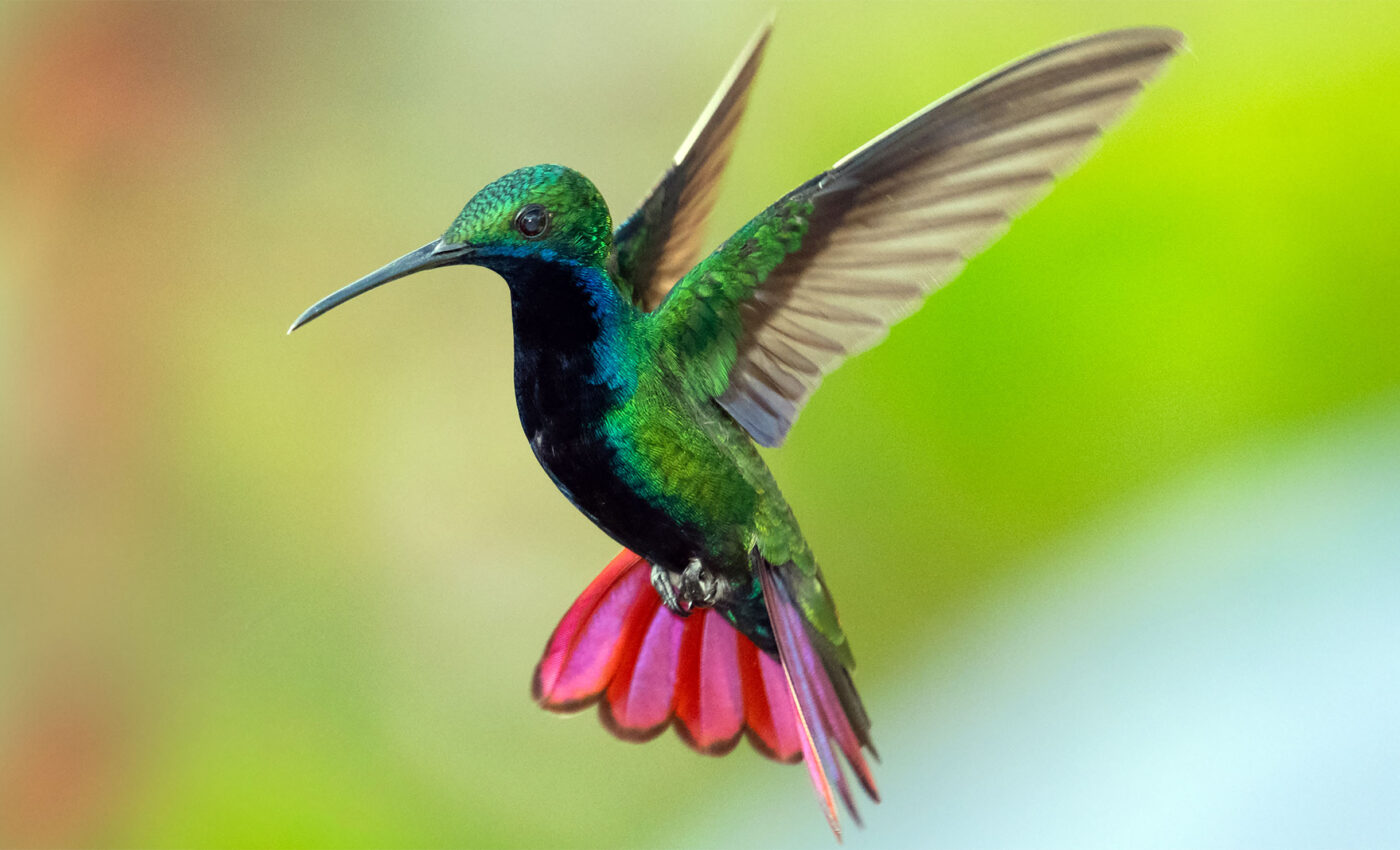
How hummingbirds deal with their need for flight speed
Researchers at the University of British Columbia (UBC) have revealed insights into the flight dynamics of hummingbirds. These findings, as detailed in a study led by Dr. Vikram B. Baliga, provide a fascinating glimpse into the intricate mechanics of these tiny, agile birds.
Dual sensory strategies of hummingbird flight
Hummingbirds, known for their exceptional flight capabilities, employ two distinct sensory strategies to navigate their aerial world. This differentiation is particularly noticeable when comparing their hovering behavior to forward motion.
In forward flight, hummingbirds adopt what Dr. Baliga refers to as an ‘internal forward model.’ This strategy is akin to an intuitive autopilot, allowing the birds to gauge speed without being overwhelmed by the barrage of visual information from their surroundings.
“There’s just too much information coming in to rely directly on every visual cue from your surroundings,” explains Dr. Baliga.
Contrastingly, when hovering or facing situations that necessitate altitude adjustments, hummingbirds depend significantly on real-time, direct visual feedback. This shift to more immediate cues is a testament to their adaptability and precision in flight.
The hummingbird flight recorder
To decipher these flight patterns, the UBC team conducted an ingenious experiment. They had hummingbirds fly through a four-meter tunnel, from a perch to a feeder.
This setup was designed to test the birds’ reactions to various visual stimuli. The researchers projected different patterns, such as moving vertical stripes and horizontal stripes, along the tunnel walls to simulate changes in forward motion and altitude. The front wall featured rotating swirls to create an illusion of positional change.
Dr. Baliga notes, “If the birds were taking their cues directly from visual stimuli, we’d expect them to adjust their forward velocity to the speed of vertical stripes on the side walls.”
However, the results revealed a more complex picture. While the hummingbirds did modify their velocity in response to these patterns, the correlation was not straightforward.
Interestingly, the birds showed a more direct response to stimuli indicating altitude changes. During hovering, they also closely adjusted their position in response to the shifting spirals on the front wall.
From avian to aerial technology
These findings offer more than just an understanding of hummingbird perception during flight transitions. They hold potential implications for the development of next-generation autonomous flying and hovering vehicles.
The nuanced understanding of how hummingbirds manage complex flight maneuvers could inform the programming of onboard navigation systems in drones and other similar technologies.
Dr. Doug Altshuler, the senior author of the study, reflects on the broader significance of their work. “Our experiments were designed to investigate how hummingbirds control flight speed,” he says.
“But because the hummingbirds took spontaneous breaks to hover during their flights, we uncovered these two distinct strategies to control different aspects of their trajectories.”
In summary, this research demystifies the flight of hummingbirds, while also paving the way for advancements in aerial navigation technology, showcasing the profound impact of nature-inspired engineering.
The full study was published in the journal Proceedings of the Royal Society B Biological Sciences.
—–
Like what you read? Subscribe to our newsletter for engaging articles, exclusive content, and the latest updates.
Check us out on EarthSnap, a free app brought to you by Eric Ralls and Earth.com.
—–













